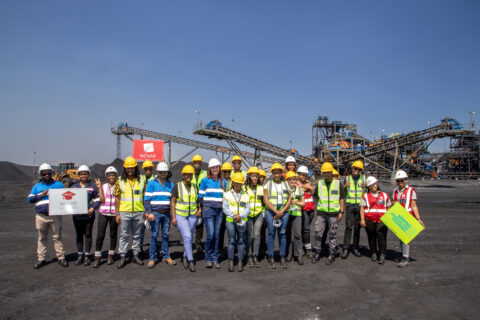SA Mining
Many Local Commodities On The Up
By Rodney Weidemann
The past two COVID-19-affected years have had a significant impact on the mining commodities sector. Despite the relative global downturn in this period however, South Africa’s mining sector has done quite well.
According to Andries Rossouw, PwC Africa partner for energy utilities and resources, although the initial lockdowns in 2020 led to the temporary closure of some mines, numerous gold and most coal mines were kept open as essential services.
“Mining, of course, remains key to the SA economy, so a lot of the other commodities came back on line quite quickly thereafter. Furthermore, the mining industry generally did well to be prepared and ready for such a return,” he says.
“There was a proactive focus on implementing vaccinations, health protocols were strictly adhered to, and significant numbers of PCR tests were conducted upfront. What this meant was that although it took time to return the industry to pre-pandemic production levels, we were mostly there by the end of 2020 and have maintained good production levels since.”
Among the responses to the economic downturn created by the pandemic, he says, has been infrastructure development – with China leading the way – which has led to iron ore prices shooting up. “Our miners have largely been able to benefit from these increased prices. If it wasn’t for infrastructure constraints such as electricity, transport and water, the industry could have performed even better.”
He says this increased revenue meant that corporate income tax from the mining sector and mining royalties also outperformed expectations, helping the country to fund its critical socio-economic spend in this period.
“The other aspect worth noting, besides this excellent financial performance, is that in many rural areas, the mining industry remains the backbone of the fight-back against the pandemic-created challenges.
“Whether the mines were providing water and food to communities, or – more critically – continuing to pay salaries during the period they were not operating, they really came to the party. This was a particularly community-focused approach from the industry, which has traditionally operated on a ‘no work no pay’ basis.”
He notes that globally, prices went up because supply simply couldn’t meet demand, partly due to the lockdowns, but also because of supply chain constraints. For many operators, obtaining the necessary mining-affiliated products such as reagents and grinding material was difficult. However, because South Africa has a mature mining industry, most of these products were available locally, so there were fewer constraints.
“Commodity prices are now up across the board, with the renewable energy transition a big driver for many metals in this space. As for the fossil fuel energy commodities – namely oil, coal and gas – these also did really well. For years, lack of investment in new supply on the back of funding constraints and environmental pressure means that even if demand remains flat, prices are likely to remain strong.”
There’s still the challenge regarding renewables, in the absence of large-scale storage, around what to do when there isn’t enough sun or wind. “When this happens, there is a spike in fossil fuel prices, and we can expect this type of volatility to continue for some time during the transition period,” he says.
Local winners
Sandra du Toit, EY Africa energy and natural resources and corporate finance leader, indicates that EY’s near-term outlook for commodity prices is bullish, due to geopolitical concerns and green stimulus.
“Metals are generally likely to gain from the US infrastructure bill and ongoing Chinese stimulus. The energy shortage is causing a surge in fossil fuel demand but equally may put pressure on energy-intensive industries, causing volatility in industrial metal production and prices of raw materials,” she says.
“South Africa’s commodities investors have been some of the biggest winners recently, as geopolitical factors have come to dominate markets, and there is an anticipation of decreased global supply of some key commodities, notably in the platinum group metals sector. South Africa’s biggest challenge in being able to fall into this positive global momentum is going to be cost increases, energy availability and logistics constraints.”
Du Toit says EY believes that global commodity prices are likely to rise further. Looking at the current scenario, the anticipation is that prices in energy, metal and agricultural markets will probably rally upwards, with crude oil leading the gains. Metal prices will inch higher, due to the cost push from higher energy prices and expected supply disruption as a result of global conflict.
According to EY’s most recent edition of the annual EY survey Top 10 Risks and Opportunities for Mining and Metals in 2022, the following can be expected:
- Miners that manage their impact on the environment and communities can build a positive legacy.
- Practical, flexible abatement strategies can achieve net-zero – and competitive advantage.
- Creating long-term value for all stakeholders can secure mining’s future.
- Miners will need to proactively navigate trade wars, new governments and resource nationalism.
- Bold capital allocation decisions can create opportunities.
- Building agility can help miners manage price volatility, substitution threats and changing customer demands.
- Miners are accelerating investment in digital to better address environmental, social and governance priorities and drive innovation.
- Prioritising digital skills and diversity and creating career pathways can build a future-ready workforce.
- Miners have a unique opportunity to analyse where the optimal value can be found by changing traditional business models.
Commodities breakdown
Du Toit notes that there have been record highs in the thermal coal space, with Newcastle coal futures breaking US$400 per tonne, with an overall increase of more than 100% since the beginning of 2022, as a growing swath of sanctions on Russia fuels international energy concerns.
“With metallurgical coal, EY sees higher prices in 2021 as a result of various supply constraints, including COVID-19 restrictions in Mongolia, a focus on safety and environment policies in China, and weather impacting supply from Canada and Australia. Prices are anticipated to normalise in the second half of 2022, as supply constraints ease,” she says.
“Lithium carbonate prices are up 218% year on year, trading at over US$21 000 in December. A widening deficit in the lithium market is expected on tight supply and increased EV demand.”
Nickel demand should increase as battery cathode production rises. Indonesia is a key growth region, but the high carbon nature of supply will become an issue. Auto production should also recover as the chip shortage eases, which is, she says, positive for aluminium and the platinum group metals.
“We anticipate strong copper fundamentals, based on a current market deficit, and on lower supply due to water issues, protests, declining grades and rising demand. New projects coming on line in 2023 may push the market back into surplus, but as we are still not seeing capex in line with significantly higher prices, the copper market will again be in deficit from 2025.”
Lastly, she notes, the gold price briefly eased at the start of the year on more upbeat investor sentiment as the global economy recovers. “However concerns remain for higher inflation, and the longer-term risks of strong responses by governments to aid economic recovery, as well as the Russian invasion of Ukraine, have sent the price sky-rocketing.”






 Sign-up and receive the Business Media MAGS newsletter OR SA Mining newsletter straight to your inbox.
Sign-up and receive the Business Media MAGS newsletter OR SA Mining newsletter straight to your inbox.